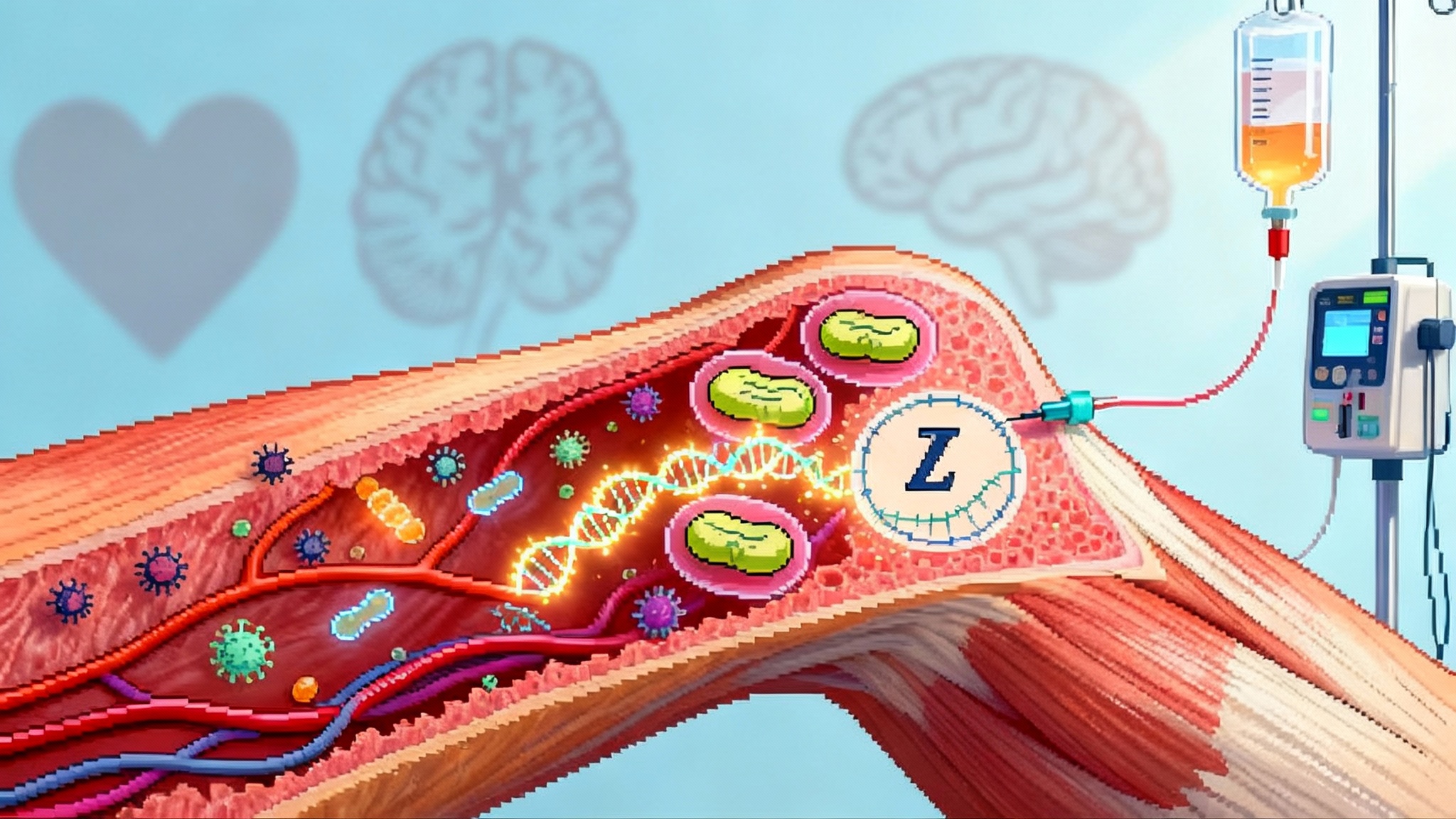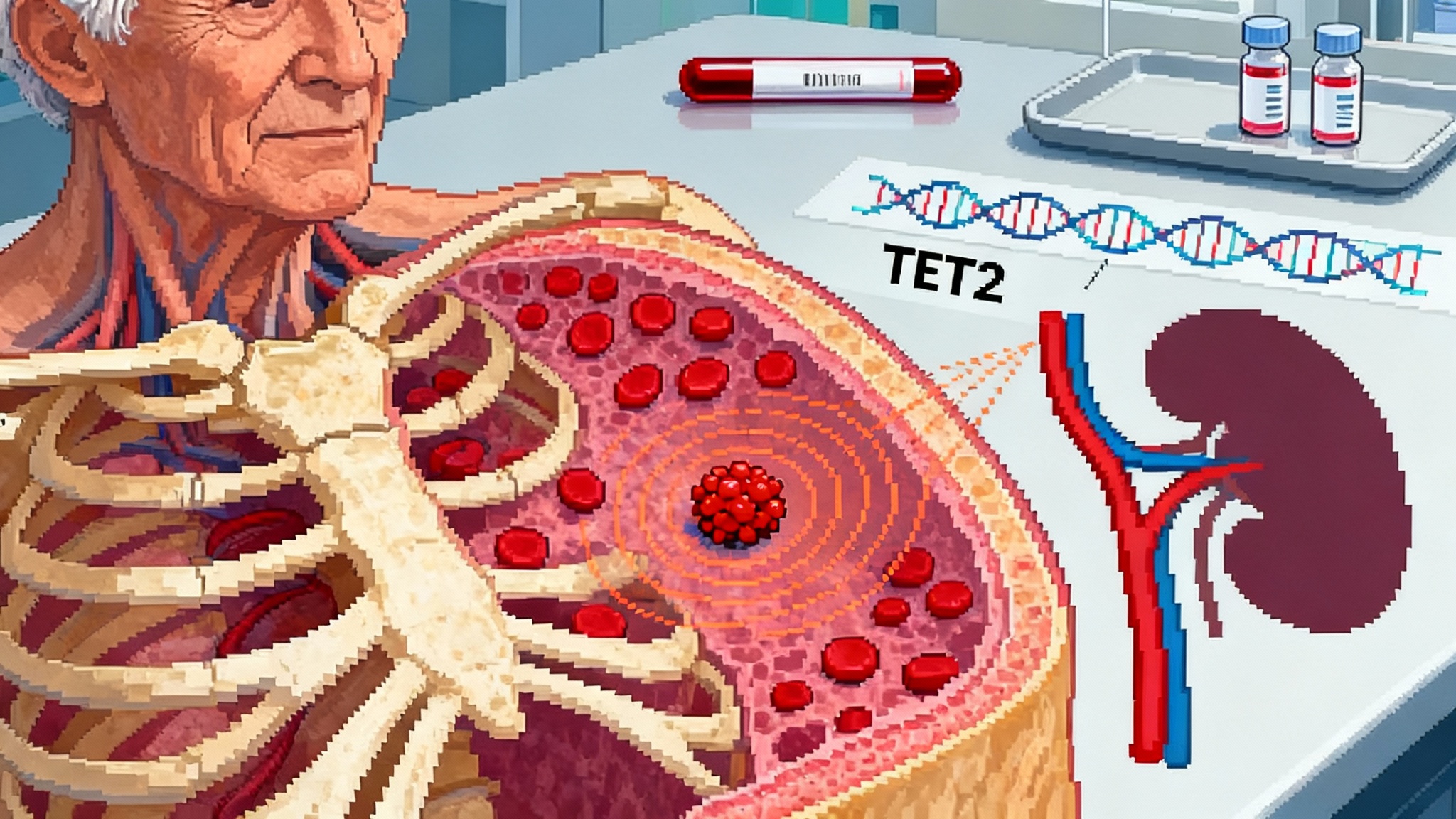FDA Reinstates NMN: A 24-month Plan to Prove NAD+ Works
After the FDA’s September 2025 clarification that NMN is lawful in supplements, the NAD+ space has a narrow window to trade sizzle for substance. This roadmap lays out the evidence plan, quality playbook, and retail relisting strategy needed to make NAD repletion real.

Breaking news, now what?
On September 29, 2025, the Food and Drug Administration clarified in letters responding to citizen petitions that nicotinamide mononucleotide is not excluded from the definition of a dietary supplement. In short, the agency reversed its earlier interpretation and concluded that NMN can be lawfully used in supplements because it was marketed as a supplement in the United States before drug investigations began. Trade press obtained and reported the letter, and the core conclusion is unambiguous: FDA declared NMN lawful in supplements.
Within days, distributors refreshed purchase orders, brand owners dusted off paused projects, and compliance teams re-read every sentence for caveats. By mid-October, the marketplace signaled what consumers most wanted to know: NMN dietary supplements are back on Amazon. Geroscience is moving from theory to trials, as seen in our report on plasma exchange bending biological age.
This is a regulatory milestone. It is not proof that NAD repletion extends healthspan in everyday life. The next 24 months will decide whether NMN and its cousins become the first widely accessible, evidence-backed geroprotectors or just a second act of hype.
NAD+, explained simply
NAD is the cell’s coin of energy and repair. Every time a cell burns fuel, repairs DNA, or signals through sirtuin enzymes, it spends that coin. We make NAD from dietary vitamin B3 family members and recycle it in a salvage loop. With age and stress, leaks increase and recycling falters. Imagine a city where toll booths stop making change and more coins fall through the cracks. Traffic still moves, but more slowly, and maintenance slips. That same repair currency touches immune function, a theme we tracked in thymus revival turning immune aging treatable.
Three supplement approaches try to refill the coin jar:
- Niacin and nicotinamide: classic B3 vitamins that can raise NAD but may cause flushing at higher doses for niacin, and at very high intakes nicotinamide may blunt some sirtuin activity.
- Nicotinamide riboside: a patented form used by companies such as ChromaDex and others, with human data showing it lifts NAD markers.
- Nicotinamide mononucleotide: the newly re-legalized option that may enter the salvage pathway near the recycling step many cells prefer.
The biology is nuanced. Both NR and NMN ultimately raise intracellular NAD through the same network. Which one works better, for whom, and in what dose will not be settled by opinion. It will be settled by data collected the same way across sites.
From sizzle to substance: the trials we need now
A credible evidence stack does not require billion-dollar mega-trials. It requires a few sharp, head-to-head studies designed for clarity and speed.
Study 1: 12-week head-to-head in healthy middle-aged adults
- Design: multicenter, randomized, double-blind, placebo-controlled, four-arm trial.
- Arms: NR 500 mg twice daily; NMN 500 mg twice daily; extended-release niacin 500 mg nightly; placebo.
- Population: 45 to 70 years old, body mass index 22 to 32, generally healthy but with at least one age-associated drift such as reduced aerobic capacity or elevated fasting insulin.
- Primary endpoint: standardized whole-blood NAD metabolomics panel at baseline, week 6, week 12. Analyze NAD, NADH, NMN, NR, nicotinamide, methylated nicotinamide, and the NAD/NADH redox ratio.
- Secondary endpoints: cardiorespiratory fitness by submaximal testing, handgrip strength, reaction time, fasting glucose and insulin with Homeostatic Model Assessment of Insulin Resistance, inflammatory cytokine panel, sleep regularity index from wearables, and self-reported fatigue validated by a brief instrument.
- Safety: flushing scores, gastrointestinal tolerance, liver enzymes, fasting uric acid, homocysteine.
- Sample size: 120 per arm to detect a 20 percent difference in NAD increase with 90 percent power and to characterize tolerance.
Why it matters: This study will answer the practical question consumers and clinicians ask today. If you give real products at typical doses to real people, which raises NAD most, and does that translate to modest functional gains?
Study 2: 24-week metabolic and vascular study in adults with prediabetes
- Design: randomized, double-blind, three-arm trial of NR vs NMN vs placebo.
- Population: 40 to 70 years old with impaired fasting glucose or elevated hemoglobin A1c not on medication.
- Endpoints: oral glucose tolerance dynamics, continuous glucose monitoring metrics, endothelial function by flow-mediated dilation, visceral adiposity by waist-to-height ratio, and the same NAD metabolomics panel.
Why it matters: If NAD repletion has legs beyond biomarkers, we should see hints in glucose dynamics and vascular function that correlate with NAD changes.
Study 3: 48-week durability and biological aging signals
- Design: two-arm NMN vs placebo add-on to best lifestyle practices.
- Endpoints: second-generation epigenetic aging measures, inflammatory age signature, and a composite functional age index that blends aerobic fitness, balance, and reaction time.
Why it matters: You do not prove longevity in a year, but you can prove trajectory. If a product shifts molecular clocks and everyday performance in a consistent way, the case for continued investment gets stronger.
The assay problem: measure the same thing the same way
The field cannot afford another year of apples versus oranges lab results. A standardized NAD metabolomics protocol must be the first deliverable of the post-reversal era. Other categories are aligning methods too, such as anti-glycation entering trials in 2025.
- Pre-analytic handling: collect morning fasting samples, use chilled ethylenediaminetetraacetic acid tubes, add a stabilizer within two minutes, and flash-freeze. Record time from venipuncture to freeze.
- Analytic method: liquid chromatography with tandem mass spectrometry using stable isotope internal standards for each analyte, locked retention times, and cross-site calibration with quarterly round-robin samples.
- Reporting: publish absolute concentrations and ratios, not just percent changes. Include a quality flag if pre-analytic windows were exceeded.
- Data sharing: commit to a public, de-identified repository of raw and processed metabolomics so that independent analysts can replicate and extend findings.
Concrete action: brands that plan to re-enter the market should pre-fund a ring-trial across three reference labs and issue a simple one-page handling standard to every clinical partner. Without this, the same supplement will look great in one lab and average in another, and nobody wins.
What endpoints convince skeptics
Skeptics are not swayed by anecdotes. They want a chain of evidence that connects chemistry to function.
- Chemistry: elevation of NAD and favorable shifts in related metabolites.
- Physiology: small but consistent improvements in aerobic capacity, glucose handling, endothelial function, and sleep regularity.
- Biology of aging: movement in validated methylation-based measures and inflammatory signatures.
- Patient-centered outcomes: fewer afternoon energy slumps, easier recovery after exertion, faster reaction times.
Choose endpoints with a one-line story for each. For example, higher NAD and better glucose curves that travel together in the same participants show that the supplement is doing more than coloring lab values.
Quality control: clean inputs, clean outputs
The fastest way to squander the FDA decision is to ship inconsistent product. Uniform quality is not a marketing claim, it is the bridge to evidence people trust.
- Ingredient identity: authenticate every batch by nuclear magnetic resonance fingerprinting and mass spectrometry, not just generic purity assays. Retain certificates in a searchable database.
- Stability: package NMN to protect from moisture and heat. Run real-time stability at room temperature and accelerated conditions, and publish degradation curves. That lets clinicians translate bottle dates into expected potency.
- Contaminants: test for residual solvents, heavy metals, and microbial limits every lot. The tests do not need to be printed on the label, but they must exist and be accessible on request.
- Transparency: put a batch lookup code on every bottle that reveals testing, date of manufacture, and expiration. That is what a serious, evidence-bound category looks like.
Retail context matters. Amazon’s supplement compliance regime has tightened in recent years, with certification pathways and platform-run lab testing for higher-risk categories. Teams preparing to relist NMN should assume they will need credible third-party certification, validated labels, and fast answers to questions about identity and stability. Build the documentation now, not after an audit lands in your inbox.
The marketplace ripple effects
- ChromaDex and other nicotinamide riboside players: expect a pivot from legal positioning to product differentiation. Head-to-head data will either validate the NR value proposition or push companies to new combinations and delivery forms.
- MetroBiotech and drug development: NMN’s lawful supplement status does not stop drug pathways for proprietary derivatives or higher purity, special-release formulations. The supplement market and the drug pathway can coexist if claims and quality stay in their lanes.
- Retailers and payment processors: the October relisting wave is not a green light forever. Vendors should expect periodic spot checks and rapid de-listing if documentation is sloppy. Brands that build a quality war room will outlast opportunists.
- Consumers and clinicians: the practical question is dose and duration. The studies above are designed to inform that, but until results arrive, moderate dosing, patience, and attention to personal response is prudent.
A focused 24-month roadmap
This is the plan that gets the field from enthusiasm to evidence by November 2027.
Quarter 4, 2025
- Convene the NAD Metabolomics Working Group with three reference labs, five brands, and two academic centers. Deliver a draft pre-analytic and analytic standard within 45 days.
- Pre-register the 12-week head-to-head trial on a public registry. Finalize site selection and Institutional Review Board submissions.
- Construct a shared data dictionary for endpoints, devices, and timepoints so that multiple trials can talk to each other.
Quarter 1, 2026
- Start enrollment for the 12-week head-to-head and the 24-week prediabetes trial. Use a single central lab for all NAD panels.
- Publish the final metabolomics standard and release anonymized pilot samples so other labs can validate and align.
- Launch a quality consortium for brands returning to major platforms, with pooled purchasing of stability testing to lower costs.
Quarter 2, 2026
- Complete first 300 participants in the head-to-head trial. Run interim quality checks for compliance, blinding integrity, and assay drift.
- Begin the 48-week durability study with biological aging endpoints.
- Release a midyear industry quality report that benchmarks label accuracy, stability, and contaminant rates across the category.
Quarter 3, 2026
- Lock the database for the 12-week study and begin analysis. Pre-specify the statistical plan and publish it before unblinding.
- Expand recruitment sites to diversify participants by age, sex, and ancestry. Biological credibility requires diversity.
- Issue a retailer-facing guidance on how to read NAD claims and what documentation to request from sellers.
Quarter 4, 2026
- Publish the 12-week head-to-head results in a peer-reviewed journal with full data release. Hold a public methods workshop to walk through the metabolomics pipeline step by step.
- Share preliminary continuous glucose monitoring and flow-mediated dilation outcomes from the prediabetes trial.
- Update product labels and clinician guides to reflect dose ranges and expected effect sizes observed in trials.
Quarter 1, 2027
- Complete the 24-week metabolic study and submit findings. Focus on who benefits most and which baseline features predict response.
- Expand the durability study to a second cohort to test reproducibility of biological aging signals.
- Negotiate a standing collaboration with a major health system to embed NAD panels and functional testing into routine preventive care visits for consenting adults.
Quarter 2, 2027
- Publish the first external validation of the NAD metabolomics standard from independent labs. If methods disagree, resolve discrepancies in public.
- Release an updated safety synthesis. Summarize flushing, gastrointestinal symptoms, liver enzymes, and any rare events across trials and post-market surveillance.
Quarter 3, 2027
- Report 48-week durability outcomes. Emphasize the linkage between changes in NAD chemistry and changes in performance and biological aging measures. If the linkage is weak, say so and adjust.
- Draft a conservative clinical practice note for midlife adults: when to consider NAD precursors, what dose to start with, what labs to monitor, when to stop.
Quarter 4, 2027
- Convene a public summit to synthesize evidence and set the next cycle of questions. If the data support it, articulate a measured, accessible path for NAD repletion to be part of standard preventive care. If the data do not, publish that conclusion with equal clarity and dial back claims.
What each stakeholder can do this week
- Researchers: align on the metabolomics standard and share your protocols. Your methods are the multiplier.
- Brands: pre-fund assays and commit to batch-level transparency. Put a lot code on every bottle that unlocks real lab reports.
- Retailers: require a concise quality packet for every NMN listing that includes identity, stability, and contaminant testing. Enforce it evenly.
- Clinicians: recommend nothing beyond label directions until dose-response data arrive. If patients elect to take NAD precursors, document baseline and 12-week follow up for glucose, liver enzymes, and subjective energy.
- Citizen scientists: if you self-experiment, treat it like a mini-trial. Keep dose steady, log sleep and activity, test at consistent times, and share anonymized results.
The bottom line
The FDA’s reversal removed a regulatory roadblock. It did not answer the question consumers actually care about: does raising NAD in midlife improve how I feel and function, and can I do it safely and affordable for years. The way to answer that is not grand claims; it is simple, shared methods, clean products, and trials sized for clarity.
If the field moves fast and clean, NAD repletion could become the first accessible, evidence-backed geroprotector that everyday people use with confidence. If it drifts back into marketing theater, the opportunity will close. The decision point arrived in September. The deadline is two years away. What happens next is up to us.








